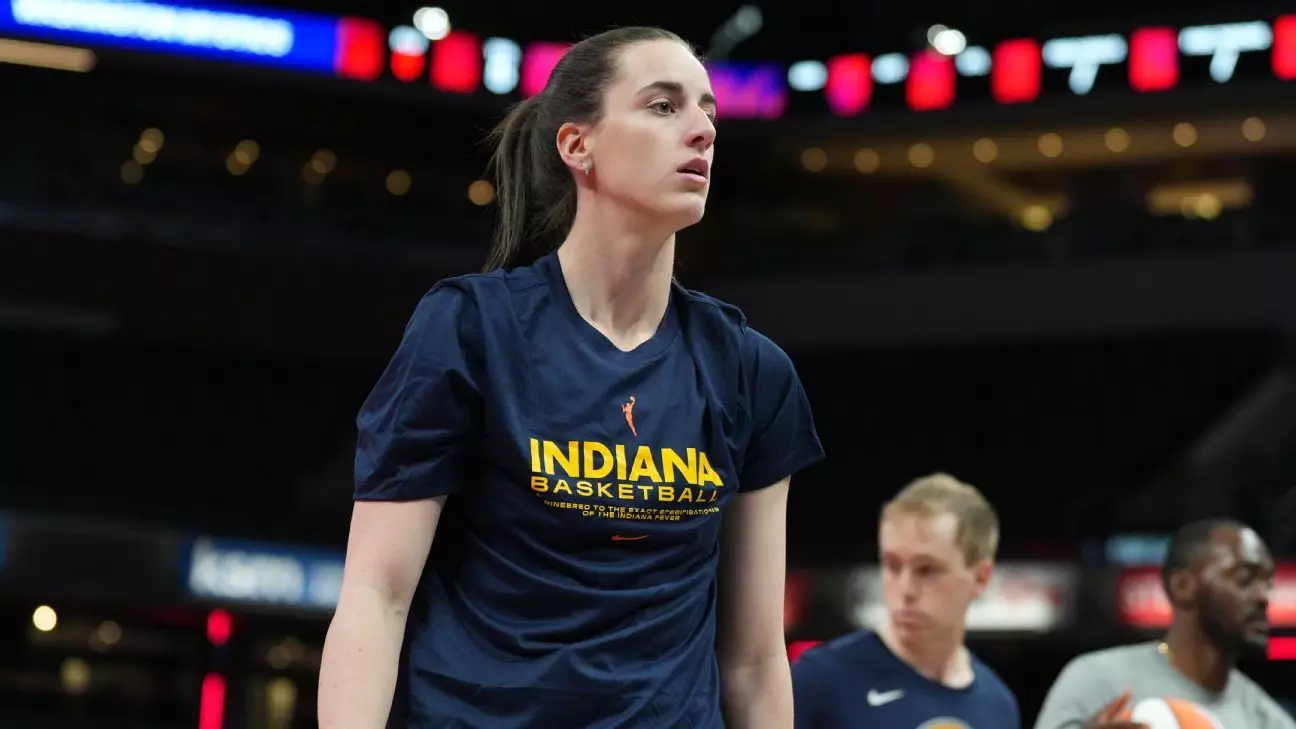There’s a raw energy surrounding Caitlin Clark, an Indiana Fever star who, until recently, was heralded as one of the most electrifying talents in women’s basketball. Her dynamic presence on the court has flipped the expectations for a franchise that has struggled to find a true leader. However, as she sits out due to a left quad strain, the emotions swirl—a cocktail of impatience, frustration, and deep reflection. Injuries can serve as cruel reminders of our vulnerability, especially in a world that demands constant performance. Yet, through her eloquent reflections, Clark reveals not just her struggle but the broader implications of resilience and patience in sports.
It’s a bitter pill for Clark, who has never faced adversity in the form of sidelining injuries during her storied collegiate career. Here she is, a first-overall draft pick, learning the hardest lesson of all: that sometimes, healing is more important than competing. While she feels a pressing responsibility as a leader, she openly grapples with the fact that her presence on the bench can be just as vital as her skills on the court. The question looms: Do we measure a player’s worth solely by their performance, or do we also value their contributions when the arena lights dim?
Embracing the Unknown
Clark’s injury has introduced doubt into the minds of both fans and her teammates. As she prepares to be reevaluated, she takes a measured approach to recovery, emphasizing that rushing back isn’t just reckless—it’s detrimental. “I feel like I’ve made a lot of progress, and I feel good, and I’m not going to rush coming back,” she insists. This awareness reflects a maturity that is often missing in younger athletes. It’s a prevailing narrative in sports where machismo often overshadows rationality, and the urgency to return too quickly can result in long-term setbacks.
Her candid acknowledgment of the fact that every day feels different during recovery is particularly striking. It highlights an unseen reality in professional sports—the unpredictability of the human body. Here, Clark’s evolution into self-awareness is critical; she learns the value of listening to her body, working in tandem with the medical team, and, importantly, discovering what her role looks like when she is not the one dribbling the ball down the court. In an age where social media feeds inundate us with highlight reels and success stories, Clark reminds us that sometimes, the most profound lessons come from silence and stillness.
Influencing from the Sidelines
As she embraces her time on the injured list, Clark has turned what could be seen as a setback into a powerful opportunity for growth—both personally and within her team. By strategically positioning herself near the coaching staff on the bench, she transforms her injury into a chance to understand the game from a different perspective. “It’s taught me a lot,” Clark reflects, demonstrating the kind of introspection that can only come from genuine self-evaluation.
Her role as a “connector” between players and coaches unveils a new dimension to her leadership. In an environment rife with pressure and expectation, Clark’s willingness to serve as a calming force reveals profound maturity. While the Fever face challenges—missing key players and experimenting with rotations—her influence as a support system becomes pivotal. It illustrates that a team can innovate and adapt even in the absence of its star player, and in doing so, they discover new strengths. This is a crucial takeaway for many in her position.
Team Resilience Amidst Challenges
The Fever’s response to Clark’s absence has been commendable. Sport often lays bare the raw rawness of human emotion—loss, uncertainty, and occasionally, a surprising revelation of strength. They might be 1-2 without her, but such statistics cannot capture the resilience and improvisation blossoming within the squad. As they rise to the challenge of facing elite teams like the Atlanta Dream and the New York Liberty, they seem to reclaim something larger than wins; they rediscover the meaning of teamwork and adaptability.
The real question is whether Clark’s absence—and the lessons that come with it—will ultimately strengthen her team. Will they emerge from this shadow, not just as a group of players, but as a cohesive unit that can function without relying solely on her undeniable talent? The upcoming games will be a litmus test for the Fever, but with Clark empowering her teammates from the sidelines, they might just defy expectations.


Leave a Reply